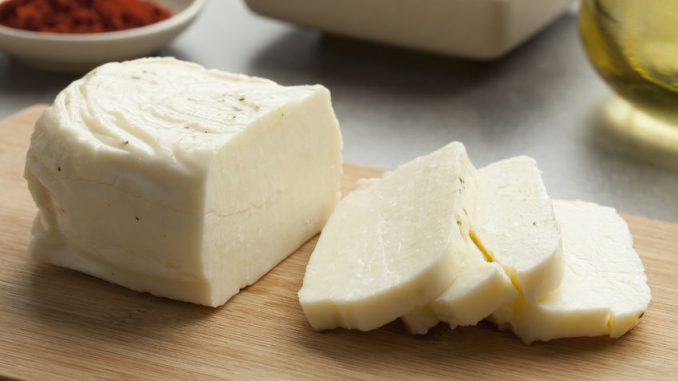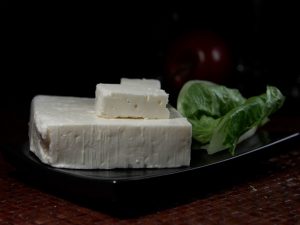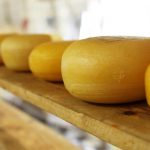

There is a tremendous diversity of cheeses from the Middle East. We are familiar with feta and halloumi for example but I’m not sure we would recognise many of the others in Western Europe. They offer a great deal of delicious potential for extending the range of culinary and product development opportunities where novel dairy products are concerned. All the cheeses are made from three sources, cow, sheep and goat, and each variant brings with it its unique tastes.
The Middle-Eastern Cheeses
Halloumi is a great cheese for frying and grilling and is often added in this manner to green salads to provide protein in place of chicken. It is a mix of goat and sheep cheese and is very similar to mozzarella. It has a high melting point which makes it ideal for cooking such as searing and barbecuing. It also works well with melon especially the sweet types. A similar cheese made from either sheep or goats milk is known as Testouri which is not commonly found and hails from Egypt. It is distinguished by its orange colour where it is eaten lightly salted.
One of the most famous although it is associated with Greece but comes from most Middle Eastern countries is Feta cheese. It is extremely popular where it is served in small cubes to accompany salads. It is made from a variety of milk sources but mostly goat and sheep. Its versatility means it can be used in a number of dishes. Many prefer their cheeses mature and this one in particular is often served after a month. It can be kept quite happily in olive oil or other flavoured oils where it picks up the aromas.

Shanklish cheese comes from Syria and Lebanon and it too is made from a couple of sources depending on supply: sheep or cow’s milk. The producers turn it into small balls which are dried and aged. Various aromatic herbs such as thyme are added to make it shanklish. It is always eaten fresh but in its aged form as the flavour develops extremely well. When very fresh, the cheese is mild with a soft, spongy texture but as with most cheeses, when it matures becomes harder and pungent although said to be more delicious.
The lesser known cheeses include Labneh which is a soft, cream cheese made from filtered yoghurt. It has a very low calorie count which makes it suitable for dietary dishes or as a low-fat version of cottage cheese. It is used to replace cream cheese in spreads and possible in cheesecake which I’m informed works very well. Dips for vegetables are also another suitable alternative.
Nabulsi cheese is a semi-hard brined cheese that comes from sheep’s or goat’s milk. It is often produced in Palestine/Israel, Lebanon and Southern parts of Syria. It is a relatively soft cheese for consuming with crackers. Chefs prefer to use it in certain pastries such as katayef. Palestaine/Israel also produces Ackawi which is made from cow’s milk. This is a semi-hard cheese ideal in salads with a smooth, slightly salty flavour that is usually eaten with tangy fruits. The acid cuts the fat in the cheese.
The final cheese type, Jibneh Arabieh is from North Africa but primarily Egypt where it is consumed in its more mild form. This is made from cow’s milk but sheep and goat’s milk was much more common. It is used in culinary dishes as a cooking cheese.
All in all, the middle eastern cheeses offer the chef and the product developer a range of opportunities in dairy that is not afforded by other types of cuisine. The cooking cheeses are unique and are also great value for money.


Any other cheeses I should know about ?
Yes – absolutely loads ! There are still a few Middle Eastern cheeses including feta amongst others. I’m also looking at European cheeses in due course. There are some excellent web-sites which are wholly devoted to the subject. I’m more interested in the processes that lead to them and the types of bacteria that live in the rinds.
Give me halloumi cheese anyday for lunch. What I like about this particular one is the way it can be grilled and then used in so many ways. Great on toast and I do it for a welsh rarebit with paprika and mustard. Also makes for an interesting croque monsieur rather than using cheddar.
So much cheese, so little time!